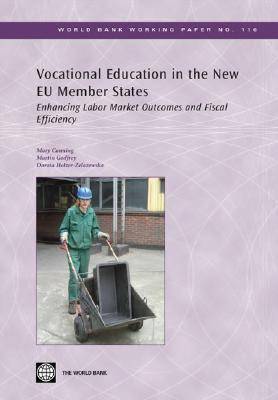World Bank Working Paper
3 total works
Vocational Education in the New EU Member States
by Mary Canning, Martin Godfrey, and Dorota Holzer-Zelazewska
Published 6 August 2007
Vocational education is often ignored during discussions of secondary education reform even though it accounts for between 25 percent and 79 percent of upper secondary enrollment in the former centrally-planned countries of the European Union. Based on information, data, and feedback from most of these countries, this paper develops a set of propositions about vocational education reform, not with a view to prescribing a detailed 'one-size-fits-all' strategy, but rather it derives some principles that continued reform of vocational education could take into account, to the benefit of fiscal efficiency.
Higher Education Financing in the New Eu Member States: Leveling the Playing Field
by Mary Canning, Martin Godfrey, and Dorota Holzer-Zelazewska
Published 1 January 2007

